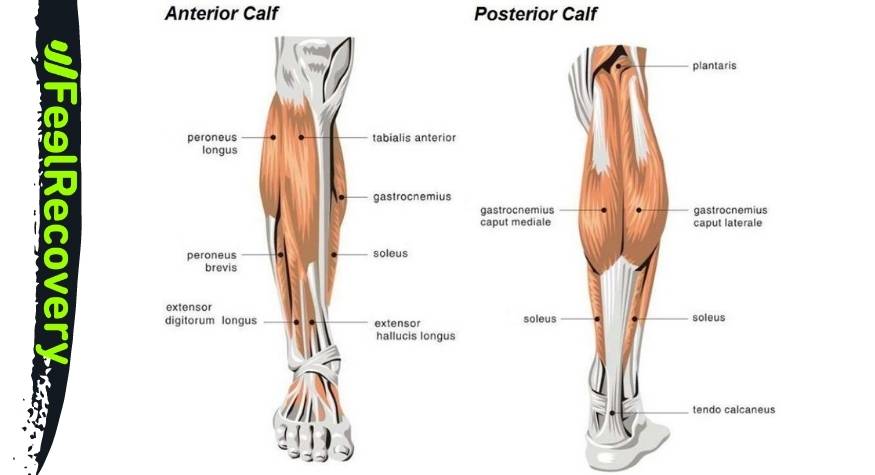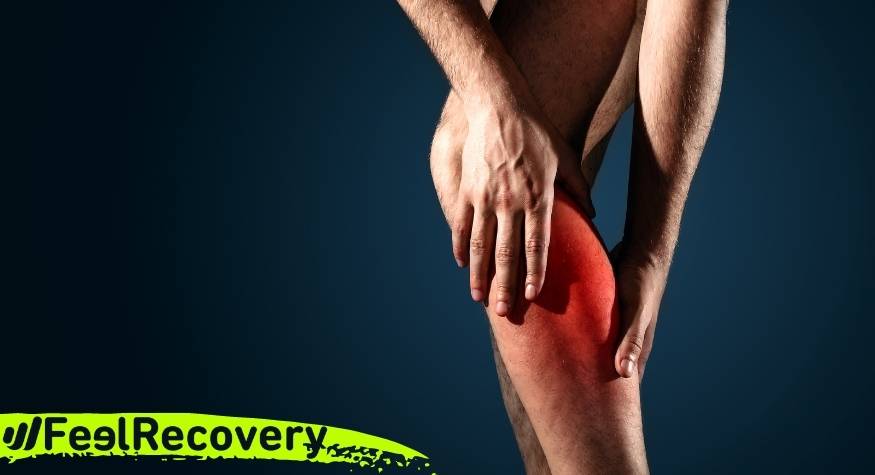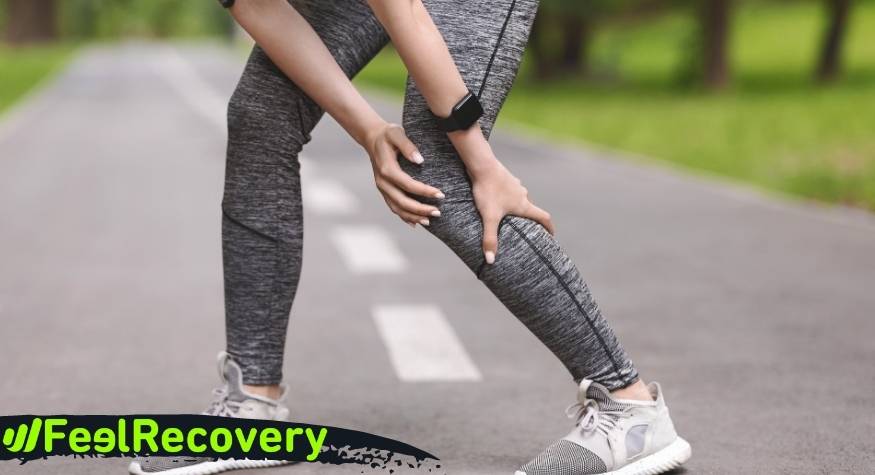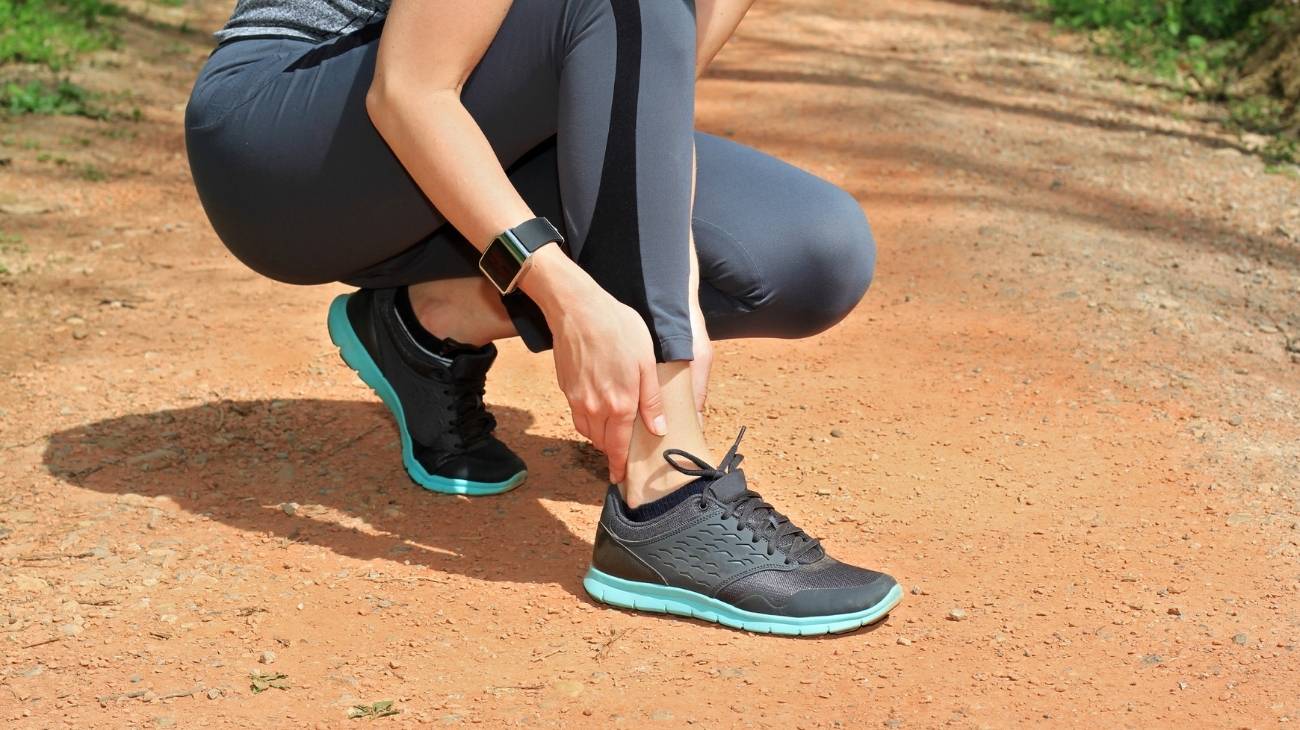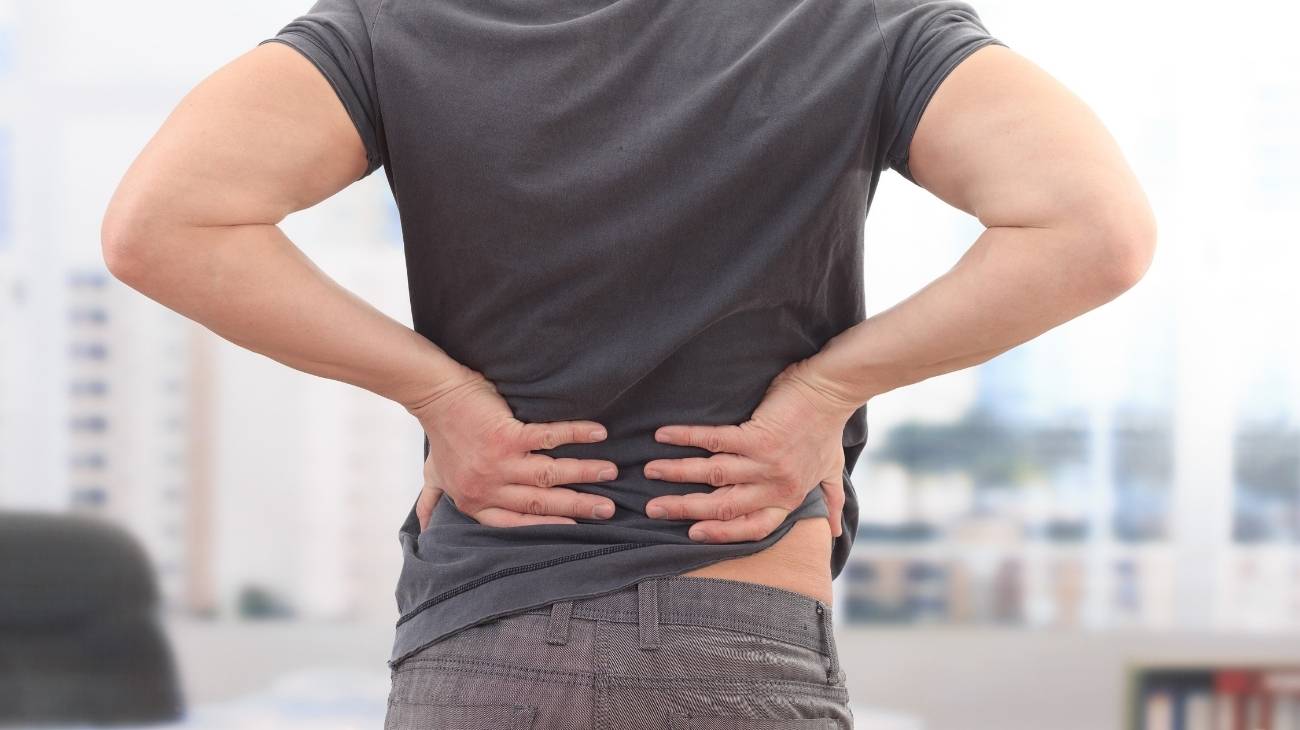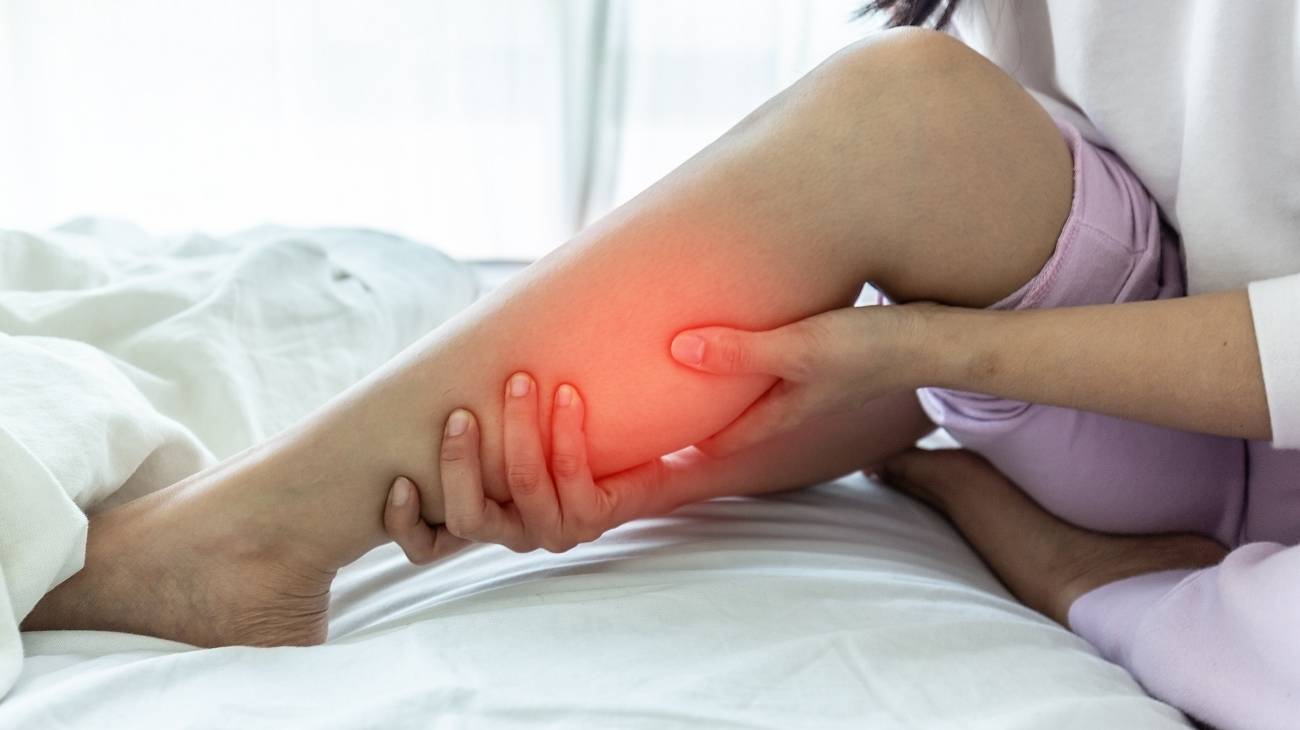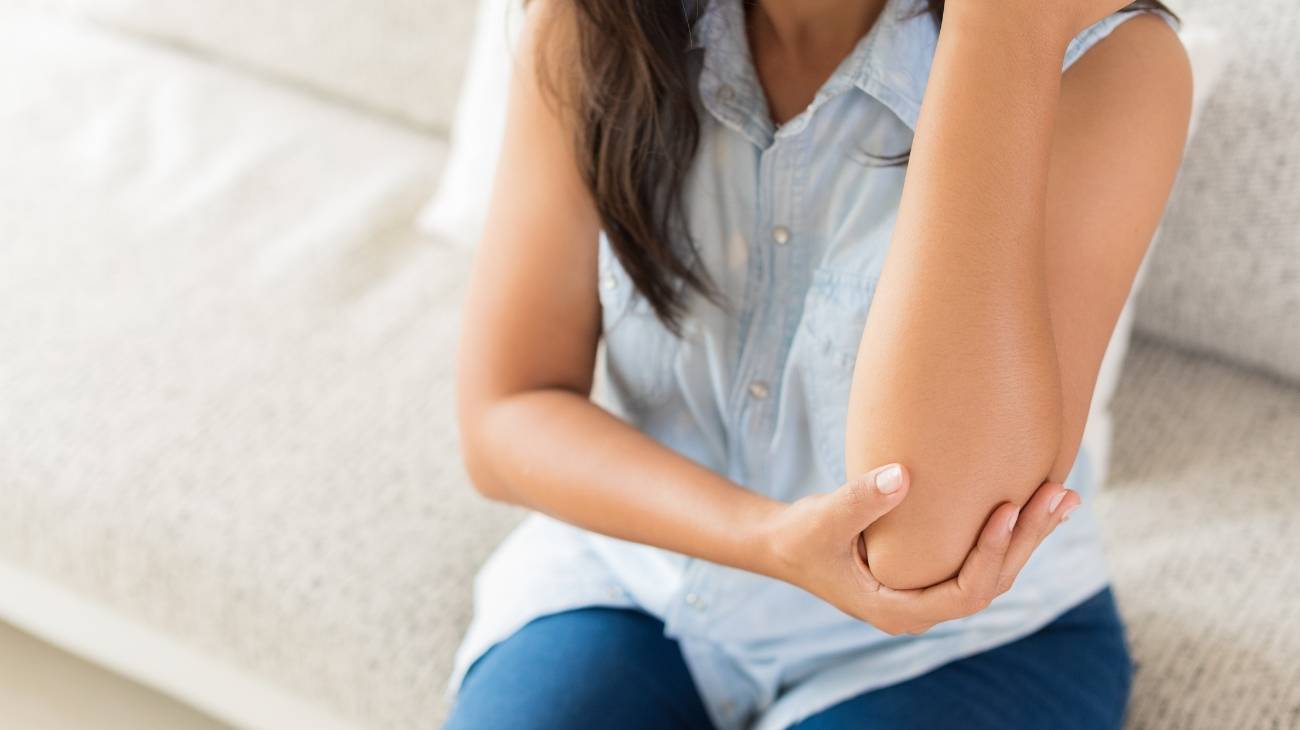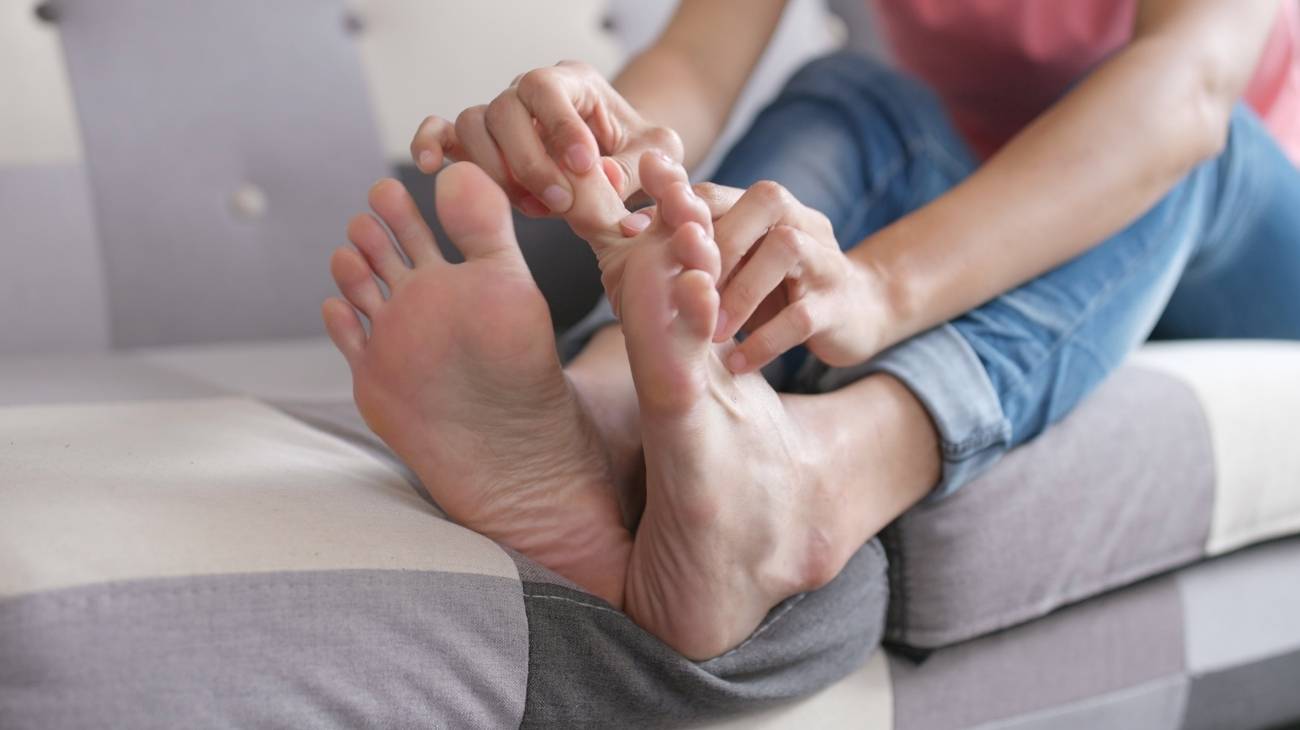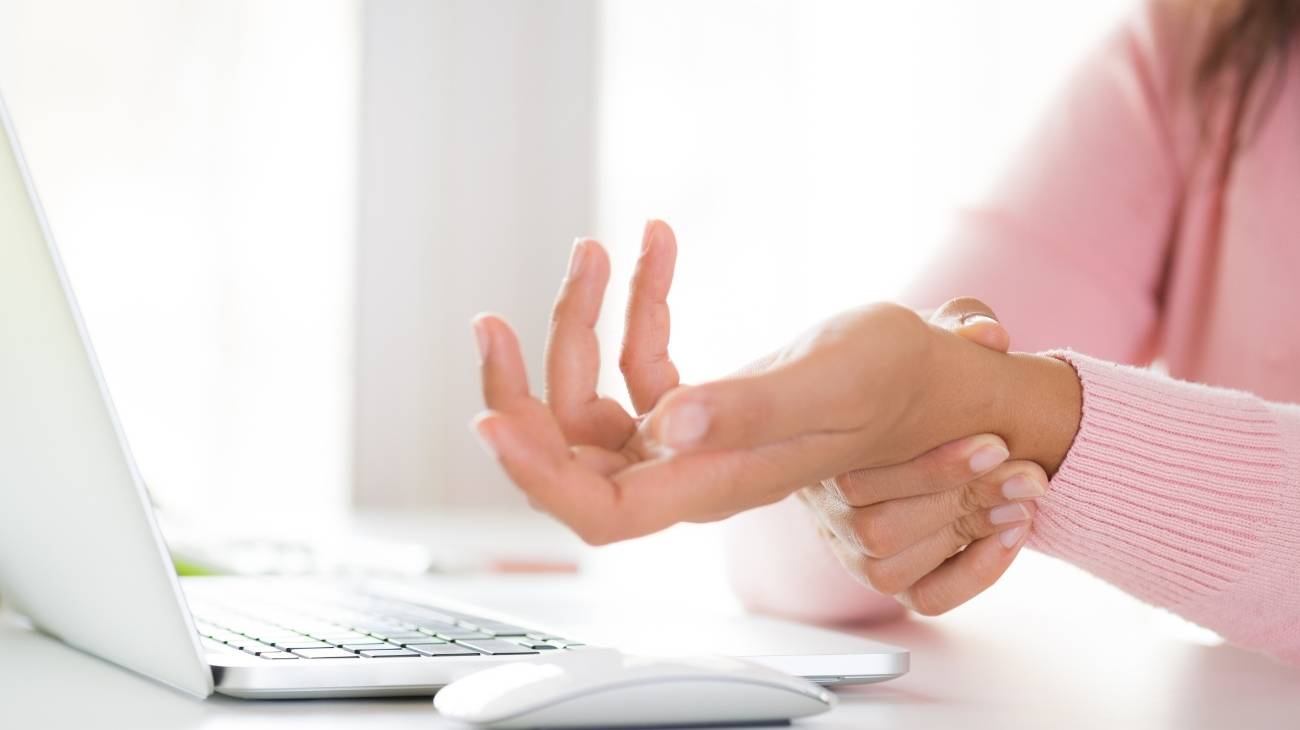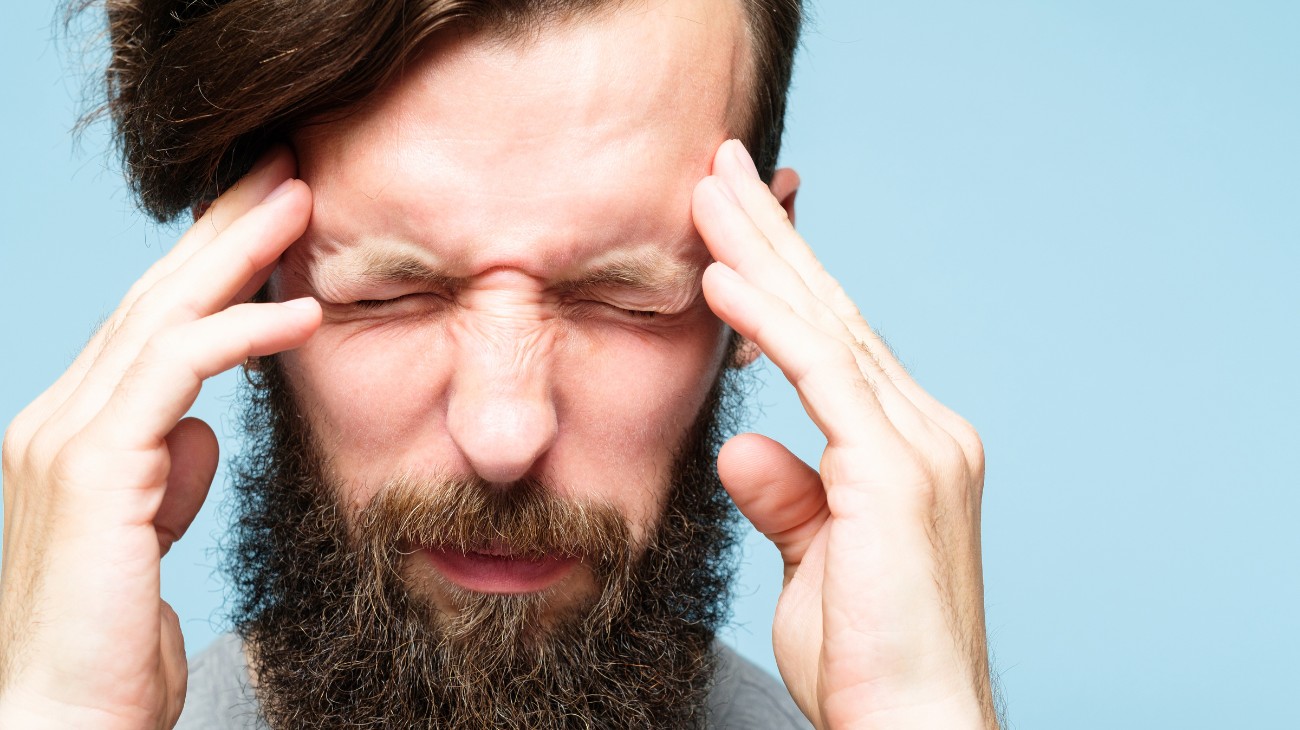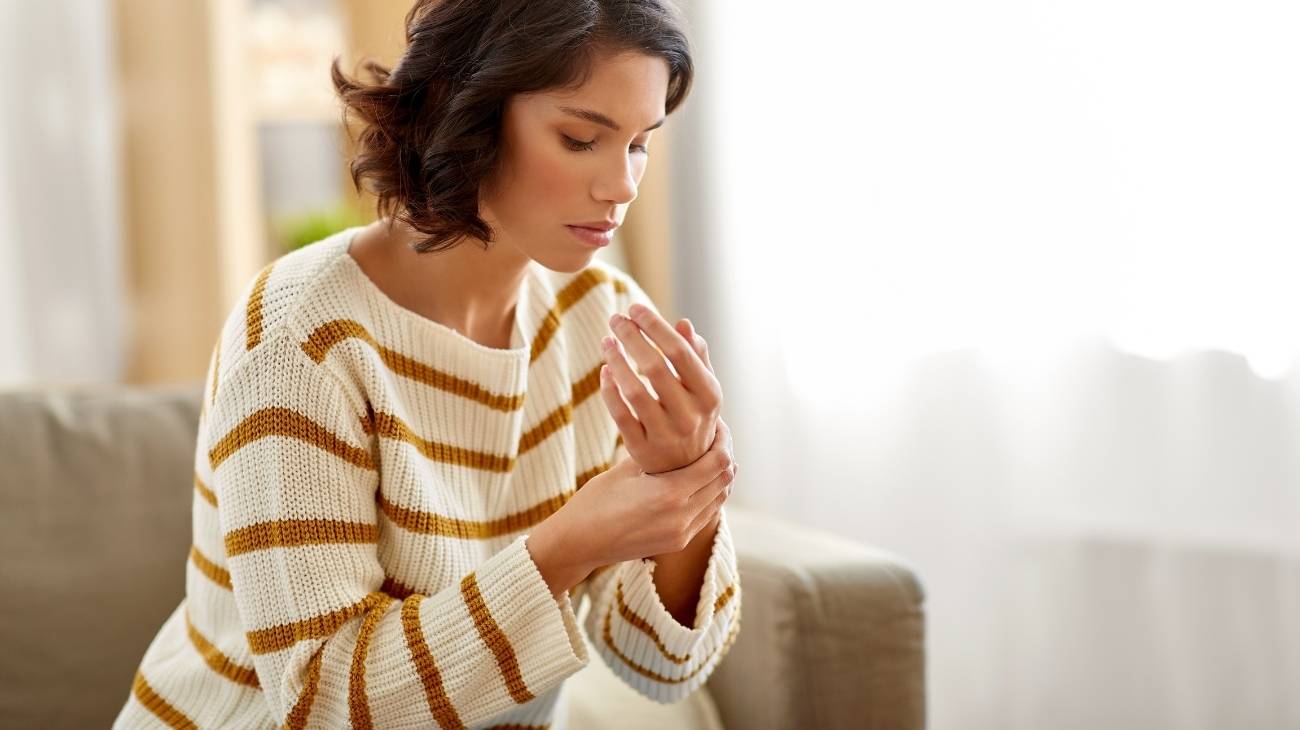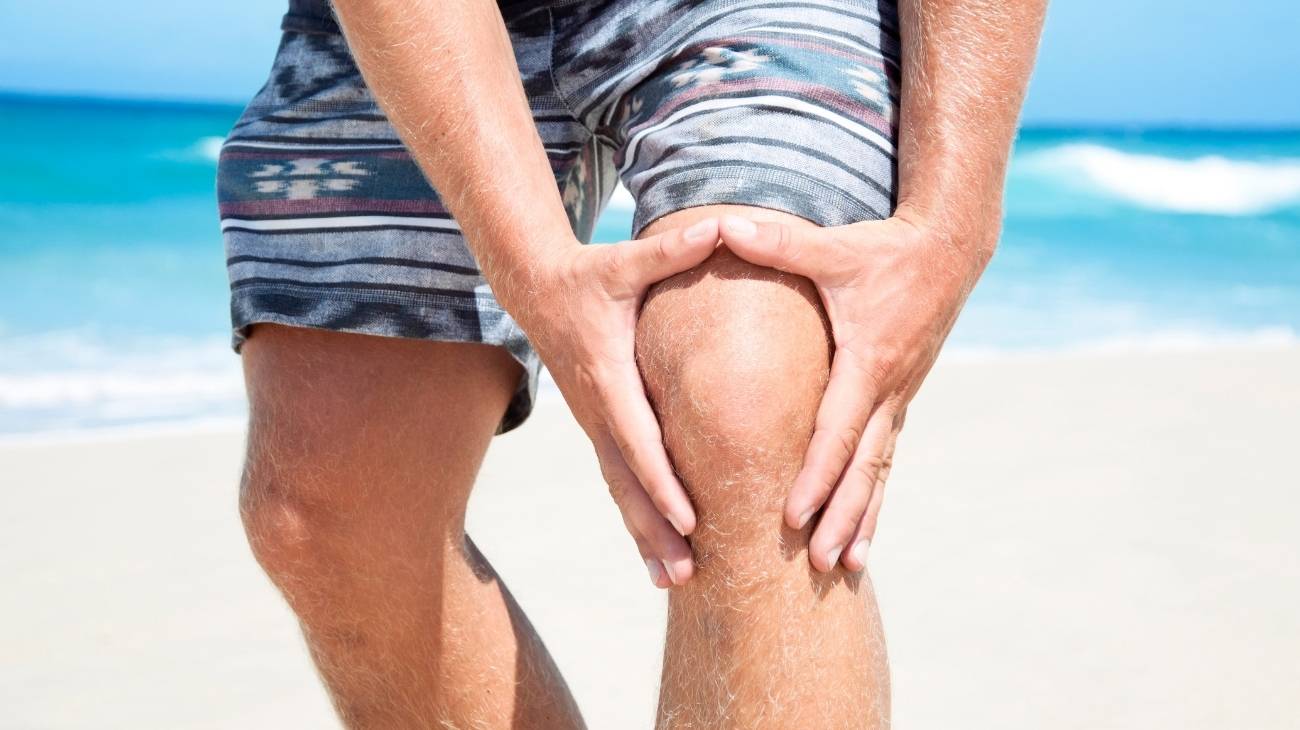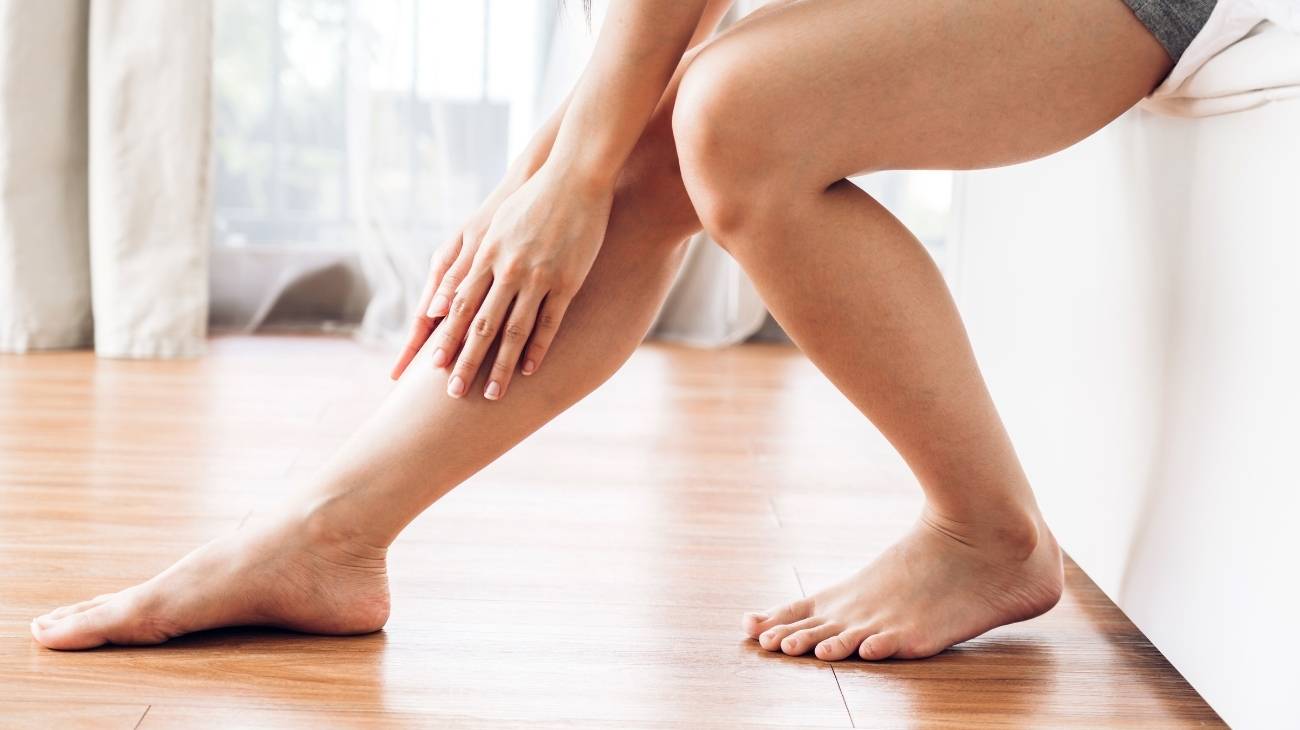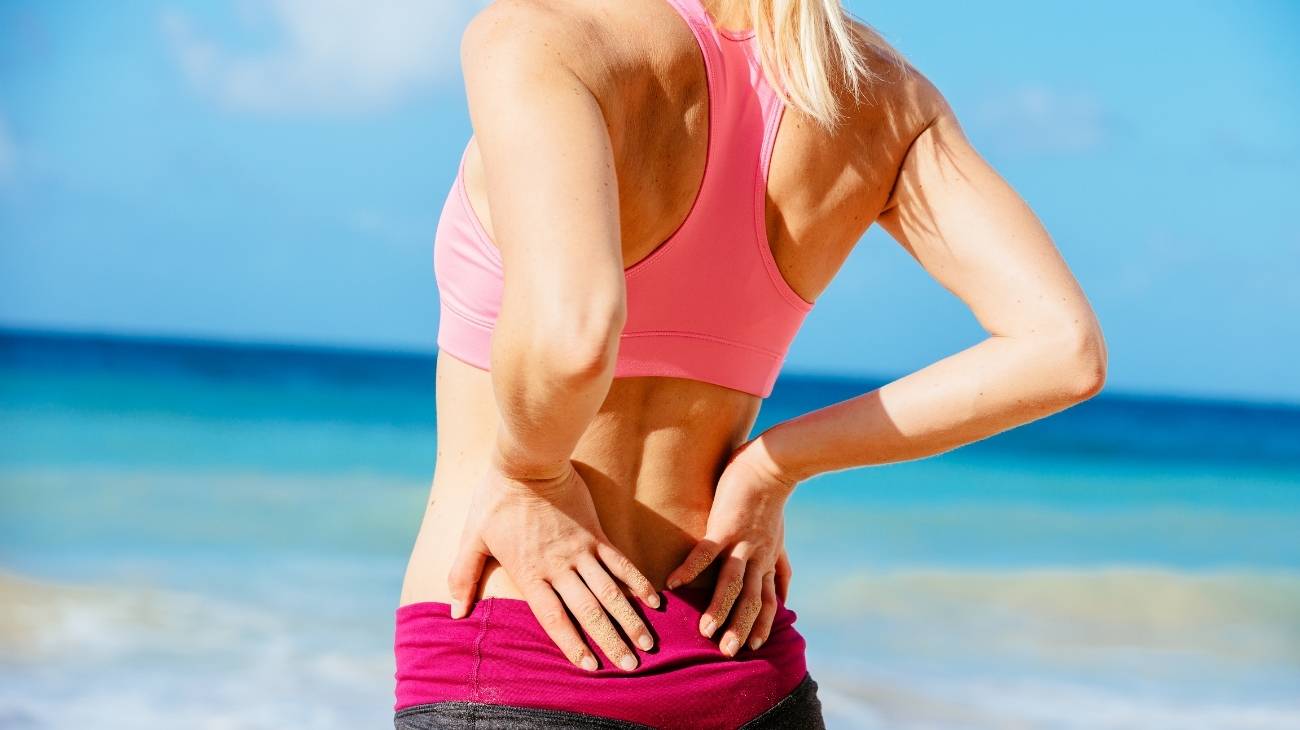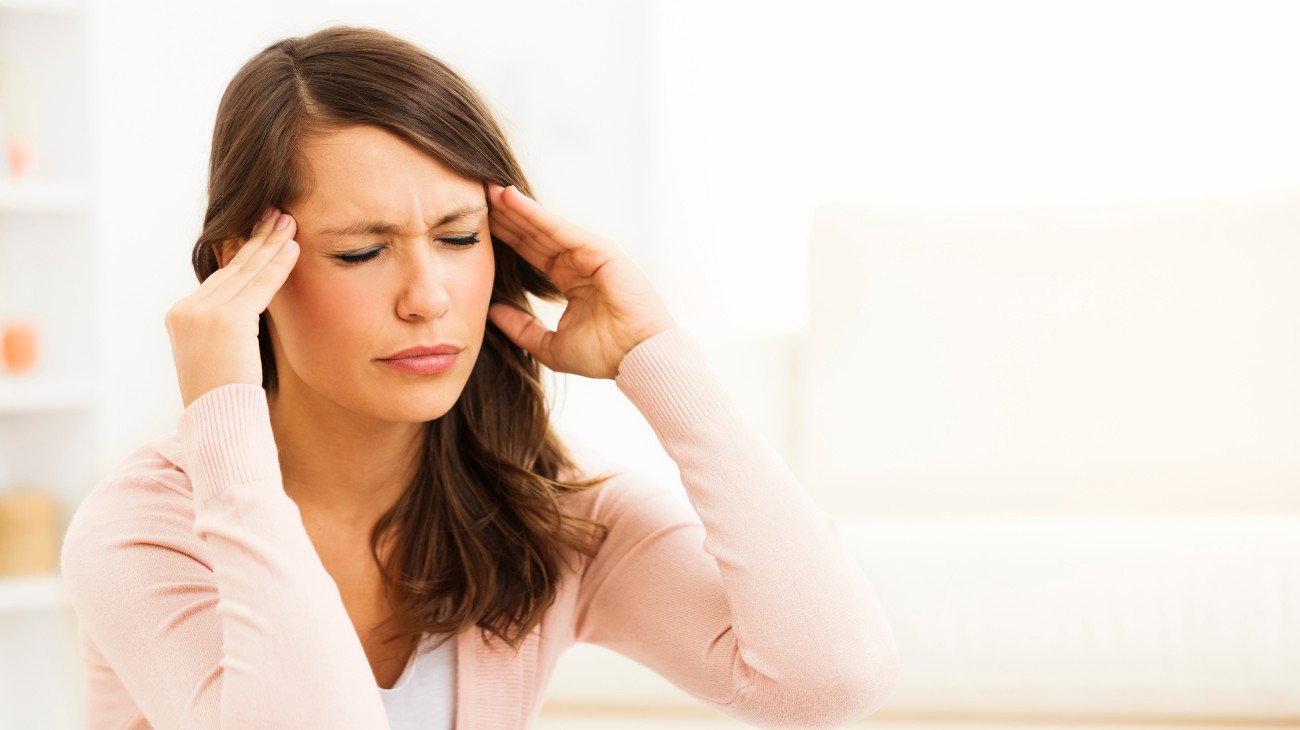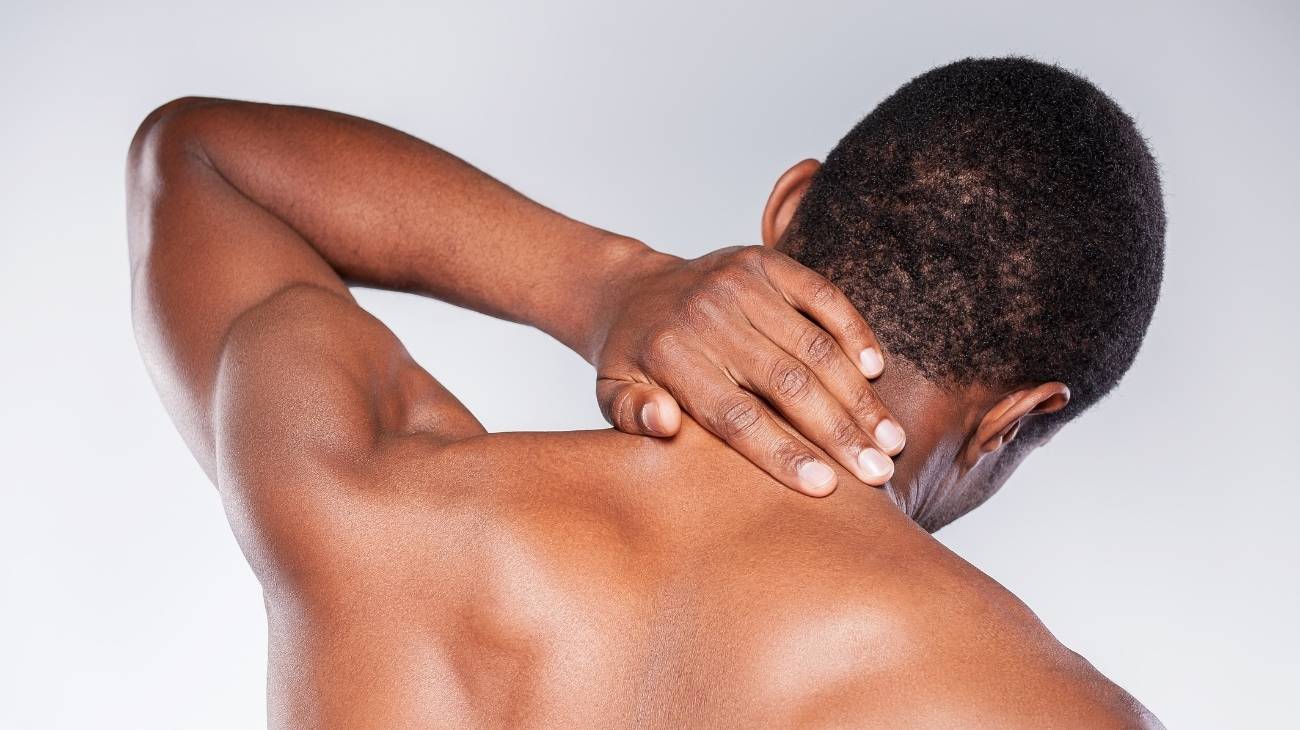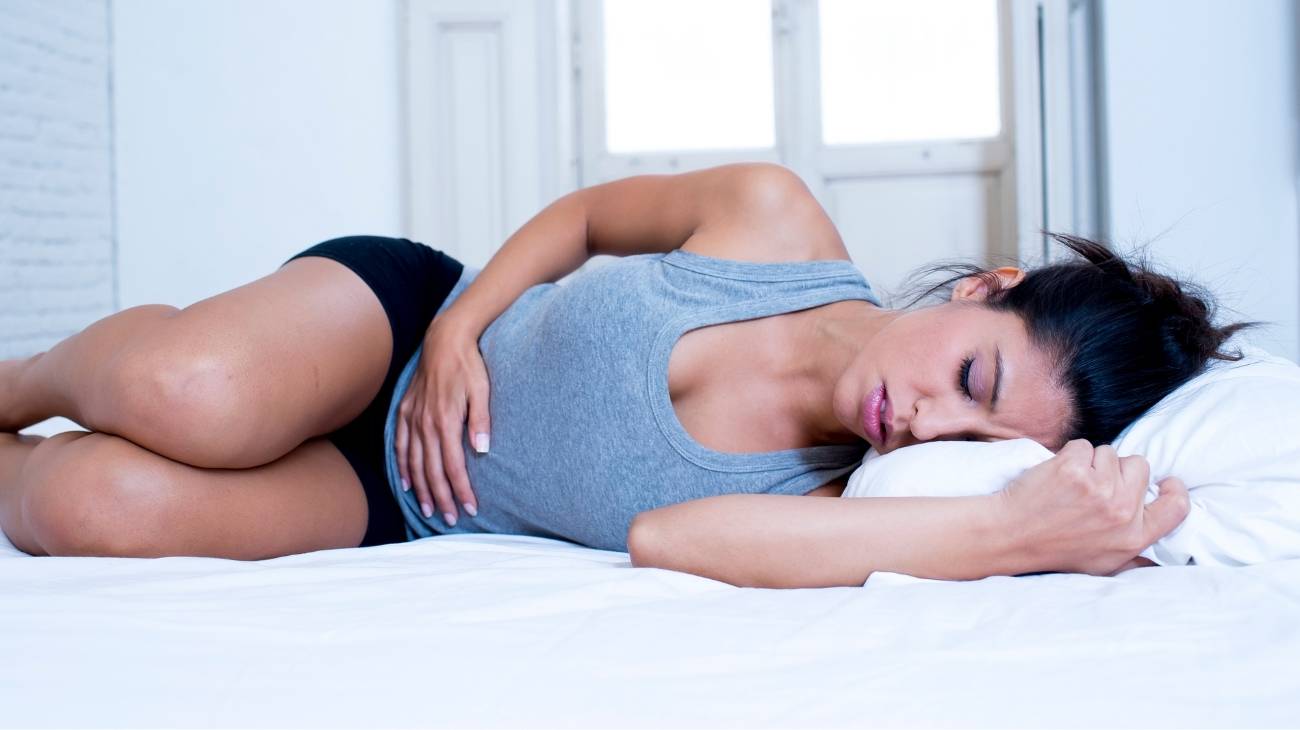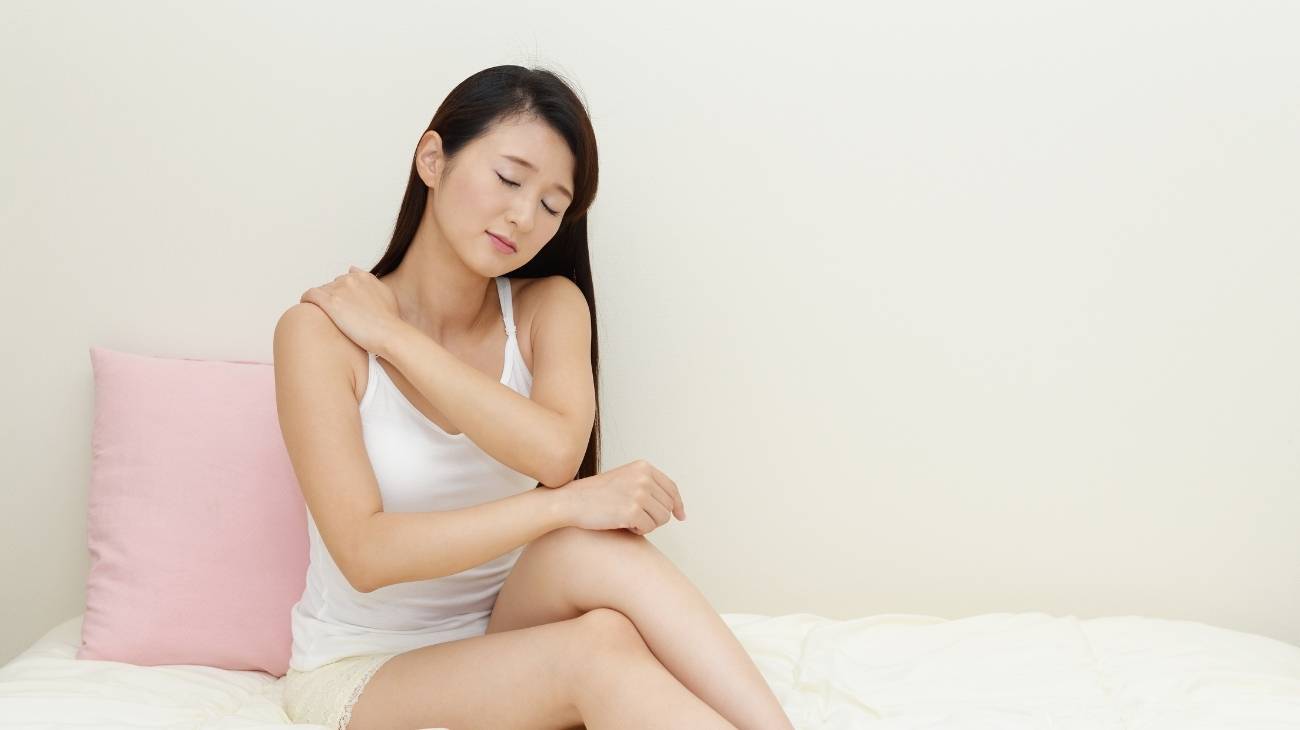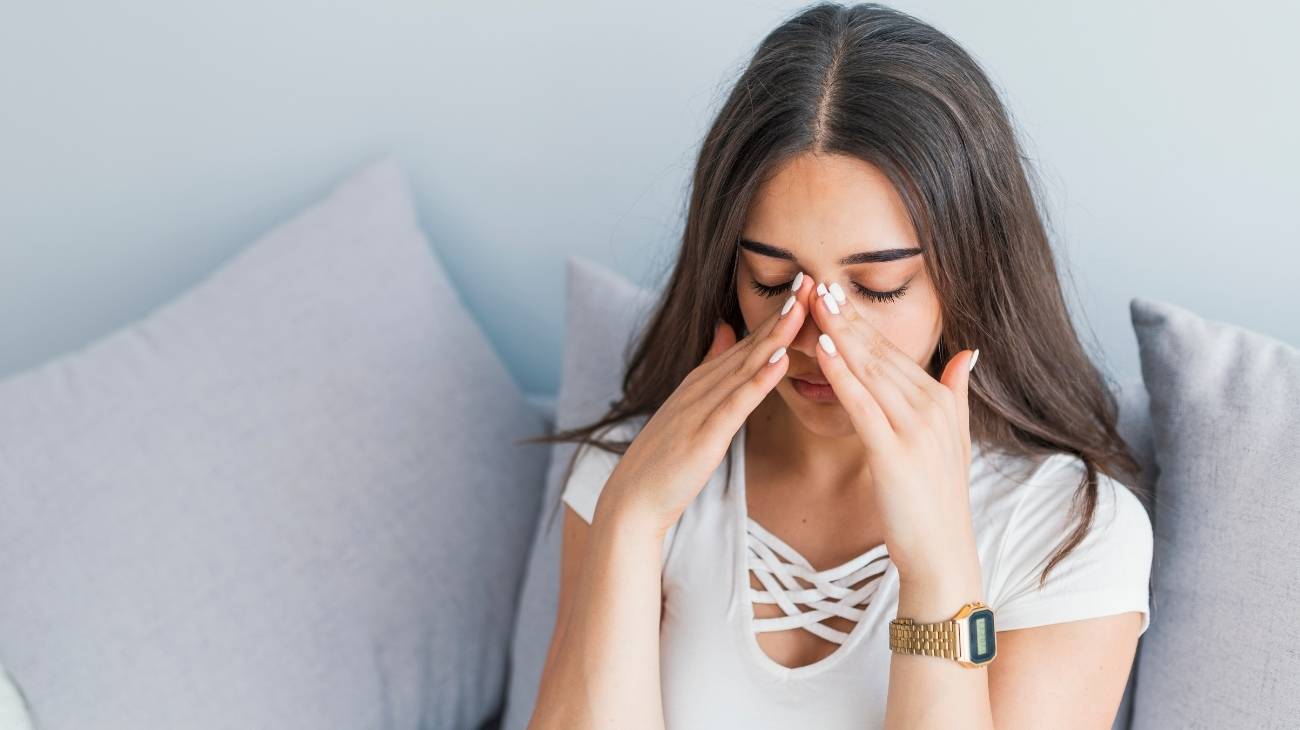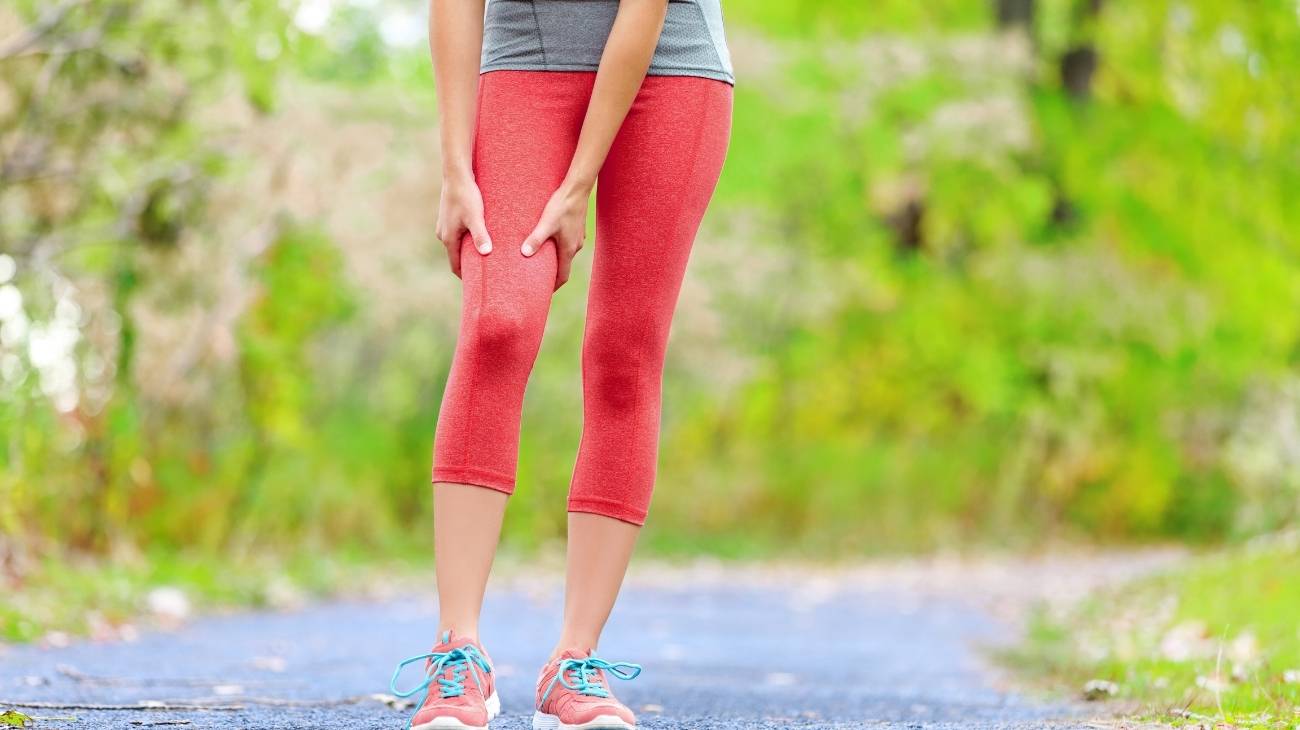- What does pain in the calves and legs consist of and how to identify it?
- Best products for calf pain relief
- What causes muscle pain in the calf muscles and what causes it?
- What kind of diseases can cause muscle pain in calves and legs?
- What are the symptoms and types of pain that make us think we have a calf injury?
- How can we relieve calf pain through complementary and non-invasive therapies?
- How to apply the RICE therapy step by step to reduce calf, soleus and leg pain?
- How to prevent future muscle pain in the calf and soleus muscles?
- Why should we avoid pills and injections to relieve leg and calf pain?
If you're looking for the best remedies for calf pain relief, you've come to the right place. This area of the leg is notorious for its sharpness of pain when damaged and also for being prone to pain on a fairly regular basis. Do your calves hurt and do you want to avoid it?
Do you want to know what to do to prevent calf pain? Find out why calf pain occurs, what damage is caused by it, the symptoms with which it presents itself and, of course, what precisely this pain consists of and how we can diagnose it.
What does pain in the calves and legs consist of and how to identify it?
The calf is a very particular muscle and one that we have been aware of since we were very young because it is one of the muscles that is most affected by day-to-day life. It is for this reason that identifying when it hurts is quite simple; it will be more difficult, however, to know why, although we will deal with that later.
It is also known as the gastrocnemius muscle and is located on top of the calf, on the back of the leg, along the entire length, its shape is flat and with a certain volume, it is made up of the medial and lateral heads, which are innervated by the tibial nerve.
It is the most exposed muscle just below the dermis. Underneath the gastrocnemius is the soleus, together forming what is called the triceps suralis. It enters the ankle joint with the calcaneal tendon and also passes through the knee.
Its main function in our body is to make it possible, together with the feet, to walk, as well as to allow us to stand on both legs (standing upright). It is the muscle that will cause plantar flexion while at the same time helping to flex the knee in a completely secondary way.
When your calf hurts, you feel a very strong tightness and a shortening of the muscle. You feel that the muscle is not fully extended but contracted. The pain is usually most noticeable when standing, but depending on the situation, you may also feel pain when bending your legs (sitting) or even in bed.
You may lose the ability to move your ankle and even your circulation may be impaired if you don't work the muscle to reposition and reshape it, possibly causing a neurovascular impingement in the soleus arch. You may also notice that your toes become claw-shaped.
Best products for calf pain relief
Bestseller
-
2 Calf Compression Sleeve (Green/Navy)
£20,95 -
2 Calf Compression Sleeve (Pink/Bordeaux)
£20,95 -
Microwave Wheat Bag for Back Pain Relief (Extra Large) (Hearts)
£24,95 -
Microwave Wheat Bag for Back Pain Relief (Extra Large) (Oxford)
£24,95 -
Microwave Wheat Bag for Back Pain Relief (Extra Large) (Sport)
£24,95 -
Microwaveable Wheat Bag for Pain Relief (Hearts)
£20,95 -
Microwaveable Wheat Bag for Pain Relief (Oxford)
£20,95 -
Microwaveable Wheat Bag for Pain Relief (Sport)
£20,95 -
Wheat Bag for Microwave Classic Bottle Shaped (Hearts)
£20,95 -
Wheat Bag for Microwave Classic Bottle Shaped (Oxford)
£20,95 -
Wheat Bag for Microwave Classic Bottle Shaped (Sport)
£20,95
-
2 Calf Compression Sleeve (Black/Gray)
£20,95 -
Foot Massage Roller for Plantar Fasciitis (Black)
£20,95 -
Foot Massage Roller for Plantar Fasciitis (Green)
£20,95 -
Foot Massage Roller for Plantar Fasciitis (Pink)
£20,95 -
Ice Massage Roller Ball (Black)
£34,95 -
Ice Massage Roller Ball (Green)
£34,95 -
Ice Massage Roller Ball (Pink)
£34,95 -
Soft Density Foam Roller for Recovery (Black)
£34,95 -
Soft Density Foam Roller for Recovery (Green)
£34,95 -
Soft Density Foam Roller for Recovery (Pink)
£34,95 -
Sport Compression Socks (1 Pair) (Black/Gray)
£20,95 -
Sport Compression Socks (1 Pair) (Green/Navy)
£20,95 -
Sport Compression Socks (1 Pair) (Pink/Bordeaux)
£20,95
What causes muscle pain in the calf muscles and what causes it?
Soleus and calf pain is caused by a general muscular contracture, which in turn can be produced by many different circumstances, such as the ones we are going to see below:
Trauma, blows and falls
Obviously, any of these aspects will cause the calf and any other tissue in our body to be affected in different ways that we will see throughout the text; it is something that happens throughout our body.
However, we can highlight that calf pain, especially from blows, can be radiated. This means that you can fall and hit a nearby area and that, due to mechanical traction, the tissues are displaced and the calf ends up hurting. In any case, the best thing to do is rest and knead the involved and nearby tissues to get them back to normal.
When walking or running
This will usually happen because we already have an injury and, obviously, we are working on tissue that is in poor condition. Another very common reason is that we are doing a bad support with the foot, both when touching the ground and when walking with the sole.
This can be caused by not knowing how to step when running, by wearing poor quality shoes or shoes with excessive high heels. What happens is a shortening of the calf muscles, not extending in a natural way and, therefore, performing their function badly.
When the calf muscle tissue becomes accustomed to the wrong footwear or footwear, it is not able to function in the way it did before the pain. This is compounded by the fact that the ankle often does not move properly, losing range of motion and forcing the soft tissues to compensate for the imbalance.
If you feel a sudden muscle pull when running, the injury is most likely to be a muscle tear, either partial or complete. Most diagnoses involving calf pain deal, directly or indirectly, with overuse, which means that the muscle hurts both when stretched and contracted.
When lifting weights
Too much weight being lifted with force with the legs can cause injury. There are specific exercises to strengthen the calf muscle but, of course, they must always be performed safely and with correct technique.
In addition, it is not necessary to be exercising for an injury to occur, a simple task such as moving can cause unexpected pain, even tearing this muscle due to poor positioning of the leg or choosing the wrong centre of support.
Pain when sleeping or waking up
When pain appears in the calf when we sleep, it is usually Achilles tendon tendonitis, which causes the calf to become inflamed on the first few occasions and degenerates when it becomes chronic. Of course, aspects such as the practice of intense sports in an inadequate or abusive way, favour this situation (especially jumping and running), other diseases such as calcaneal spur, can be the origin of this pain.
On the other hand, we must not forget muscle relaxation itself, which is at its maximum when we are asleep. If our muscle is weak or untrained, it will contract more easily and will be unable to relax again. Another reason is dehydration combined with excessive fatigue.
Pain at rest with no apparent cause
This occurs when one of the following pathologies has occurred, or when the treatment is not being carried out correctly, or when it is too early to notice a recovery. A sedentary lifestyle or prolonged static postures are also often a reason for the pain.
Office work or, in general, jobs that require us to remain in the same position for several hours make our immobile muscles weaker and weaker; then, under any circumstance, the effort they have to make will be of greater effort. Lack of exercise also reduces the activity of the enzyme glycogen synthase, which is the enzyme that synthesises glycogen, a substance necessary for the muscles to carry out their functions.
Sometimes it may also happen that you have a blood clot from spending too much time in bed and, of course, when you get up you feel pain, the deeper the vein is, the greater the pain. The appearance of varicose veins is obvious and easy to treat if detected in time. You will also notice heaviness, cramps, swelling, etc.
Due to exercise and intense effort
An example that few people can think of that can be the cause of this ailment is an excess of tension in the muscles of the thighs. This occurs when we play sports and exert more effort than the leg can withstand.
In any case, when we do more exercise than our muscles are capable of doing or we do it in a more intense way, the calf muscles suffer to varying degrees and, of course, become sore; this is what is known as calf muscle overload.
In pregnancy or due to excess weight
Excess weight is always going to put extra strain on the whole body. We will notice it especially in the lower areas such as the instep, the ankle and, of course, the calf and also the knee, as these are the areas of the body that are supporting the most extra weight.
The symptom picture is that of any wear and tear: heavier legs and instep, more easily sprained ankles, aching bones and muscles, swelling and redness of the legs. The obvious solution is to lose weight and, during pregnancy, simply be patient and follow the doctor's instructions, which will vary according to the stage of pregnancy and your own physical characteristics.
Stress and emotional causes
The main symptom of stress is not calf or leg pain in particular. This discomfort in the legs occurs later than in other parts of the body, as the neck or the head are more prone to pain due to stress.
We do find occasions when gastrocnemius pain is caused by stress, with cramp or contracture being the pathologies that occur. Its treatment is simple, with gentle massages and repositioning of the tissues and allowing time to pass and, of course, trying to eliminate the reason for your discomfort.
Poor circulation
Poor circulation makes us much more prone to muscle overload, especially if we start to strain the muscle quickly and intensely. Ischaemia can also be caused by static postures.
In this case, the most important thing is to get into the habit of wearing specific compressive garments according to your blood flow, work the blood vessels with hot and cold, prevent with cold baths after exercise and, of course, warm up longer before doing all physical activities that cause pain in your legs and calves.
Lack of rest
Lack of movement can weaken this muscle, however, too much physical activity without good preparation of our body can also cause damage. Depending on your activity (both at work and in sport), you must calculate and respect certain rest times so that the tissues can recover, oxygenate and nourish themselves well.
What kind of diseases can cause muscle pain in calves and legs?
There are many diseases and pathologies that can cause pain in the calf muscles, although we will focus on the most common and most recurrent ones, as well as some lesser-known cases that are difficult to diagnose.
Muscle contractures
Muscle contracture is the most common cause of calf pain. It consists of a shortening of the muscle, which has trigger points that cause pain. When certain muscles work excessively, they shorten and deform the foot, making it cavus, hammering the toes, bulging the gastrocnemius muscle itself and causing the calcaneus to move away from the place where it inserts into the Achilles tendon. The affected area stiffens.
As you can imagine, all this tissue modification, especially at the most extreme points, has consequences. Pain is the first symptom, appearing when you move your leg or rest your foot, but it is accompanied by visual and tactile bulging of the area (which will also hurt) as well as a reduction in movement. If left untreated, it can lead to muscle tearing.
Muscle cramps
Cramp is very similar to contracture in terms of symptoms. It is a milder pathology consisting of involuntary spasm or contraction of the muscles with pain. Generally, this process is even visible. They do not have the greatest importance in terms of consequences but it is advisable to pay attention to the causes, they involve weakness and this can lead to other problems that could turn into something serious.
Muscle strain
On the other hand, we have muscle strain or what is commonly known as muscle pull. This is the elongation of muscle fibres. It usually occurs when we make sudden changes such as accelerations or jumps, when we warm up too little or badly or when we do physical activities with overexertion. Other reasons are overuse of the muscle or lack of rest.
Pain that appears acutely and suddenly, both when contracting and stretching the gastrocnemius muscle, such that we are unable to continue with our activities. On palpation, we find tight bands within the muscle itself.
Musculoskeletal rupture
If we go one step further, we find a rupture, in which the muscle is much more affected, producing much more intense pain as well as aggravating other symptoms. The calf can be partially or even totally ruptured (there are three degrees of calf rupture) and occurs due to bad practice, poor or bad warm-up, activity in very cold and damp environments, trauma and blows, etc.
Of course, although a broken bone is not a pathology that directly causes muscle pain, it is considered an obvious secondary symptom. The broken bone is inadequately repositioned, and can dig in or simply rest on the tissues in an unnatural way, irritating them and putting pressure on them. This condition is a serious risk that requires immediate medical attention and surgical treatment.
Tendonitis
Tendonitis of the Achilles tendon occurs along the entire length of the tendon (including the lower part of the calf), the pain is most intense "when cold" and just after sports practice. It occurs for many reasons, from a simple change of shoes with heels to forcing traction by changing the plantar support, suffering from hyperpronation, mountain routes, etc.
Retrocalcaneal spur
This is a problem that causes pain in the calf muscles due to stiffness, overloading or excess muscle tone. It requires orthopaedic treatment in addition to treatment of the cause itself, including osteopathy, massage, etc.
Problems with glycogen
The hormone glucagon inhibits the formation of glycogen and also promotes glycogen breakdown. If we generate it for whatever reason, we are obviously causing glucose to flow back into the blood and deplete glycogen stores, which are the muscle energy reserves. Thus, we start consuming adipose fat, losing tissue and weakening muscle.
When we have too much glucose in our blood, we can develop diabetic neuropathy, a nerve damage in our feet and legs (when we have diabetes). Symptoms include numbness and leg pain in muscles, nerves and even bones, and problems with other devices such as the excretory and digestive systems.
Sarcopenia and lack of collagen
Sarcopenia is the loss of muscle mass. This occurs mainly with age, as does the increased difficulty in producing collagen, especially in the case of pain in the calves, although it can also be due to other causes.
Hypocaloric diets, low in minerals, post-surgery, lack of collagenase or other problems to break down collagen are more than enough reasons for symptoms such as muscle weakness and instability, pain both in the tissues and joints, etc.
Peripheral artery disease
The arteries become narrowed causing the blood flow to slow down. This causes pain in the calf and also burning and generalised fatigue in the legs. Initially, it is only noticeable when climbing hills and walking long distances, but then the resistance of the tissues is reduced and the symptoms occur earlier and earlier, even at rest, at which point, of course, the only thing left to do is to see a doctor.
Degenerative or chronic diseases
There are some degenerative diseases, more or less well known, which also present this symptom. An example of this is twin pseudohypertrophy, which limits our posture and weakens our legs. It includes changes in the vertebral discs of obvious degenerative character, as well as lipid infiltration between the muscle tissue.
An example of pain radiating to the calf and leg is lumbar disc disease, which consists of the dehydration of these discs, degeneration and reduction of their flexibility until the area hurts almost continuously in an advanced state.
What are the symptoms and types of pain that make us think we have a calf injury?
We have seen that there are many injuries and, although different, the symptoms are similar in each case. Even so, knowing them will help you to rule out certain problems and get an idea of exactly what is happening to you.
Most common types of symptoms
In the case of a calf injury, you will find symptoms such as the following:
- Pain: The discomfort may be more or less moderate but, in general, we notice it intensely in this area. It is very localised in this case and, as it spreads to the rest of the tissues, it becomes less severe, even affecting the whole of the back of the leg, from the heel to the knee.
- Swelling: Rare is the case of swelling as such due to the area becoming inflamed as a defence. What we do find, very often, is a change in the posture of the muscle, which becomes more bulging and sometimes we even get to see, on occasions, practically balls of flesh.
- Stiffness: Of course, this is a common symptom in almost any case if we consider stiffness to mean that the tissue becomes harder than usual, as this goes hand in hand with pain in practically all cases. However, it is necessary to differentiate between true stiffness, which means that the muscle, the tissue as such, loses motility.
- Reduced movement: The pain and stiffness itself prevents us from moving the muscle normally and performing actions such as standing on tiptoe. It is not serious and disappears quickly after recovery.
- Tingling: This symptom only occurs once the muscle has returned to normal but is still weakened. It is accompanied by sensitivity to touch and also the previous pain itself. Diseases and other pathologies as such do not cause tingling in the calf.
- Tibial block: Under load, the soleus and flexors are able to block the tibia by hyperextending the knee by changing the angle of its position
- Irritation of the Achilles tendon: This tendon is overstretched and becomes irritated when walking because it cannot conform to the shape of the bones of the foot.
Types of symptoms depending on the area
- Pain in the upper part of the calf: This is the part that occurs in most cases, as it is where the calf is most accessible, largest and most complete. This is where we find all the symptoms we have just seen and, of course, the area where those painful balls of tissue form.
- Pain in the lower part of the calf: This occurs when the pathologies are specific to the lower area, such as the tendon, the heel or the ankle. The intensity depends on the type of problem we are suffering from. In general, it is not as acute as when we have problems in the calf itself. The area, if inflamed, is equally inflamed and palpation does not usually provide affected tissue information nor does it make the pain much stronger than how we feel it without touching it.
- Pain in one calf head: This may simply be because the overexertion is in one calf, with the pain being much stronger in one calf than the other. On the other hand, there could be a tear or breakage of only one of the heads or other problems such as fractures or twisted ankles affecting only one of the parts.
How can we relieve calf pain through complementary and non-invasive therapies?
It goes without saying that the main symptom when our calf muscles are affected is pain, which is very characteristic, in fact, in most cases. Discover the natural, complementary and drug-alternative ways you can use to make your muscles feel much more comfortable.
Massage therapy
Massage is the primary remedy for virtually any calf problem, as calf problems often occur due to changes in shape or position. Kneading the muscle tissue will easily reverse this situation.
The movements to look for are those that relax the muscle tissues, not just staying on the calf but massaging the whole leg, from the hamstrings to the soleus. Unloading massage is the most beneficial for treating discomfort and pain in the lower legs.
Cryotherapy
This therapy consists of placing cold on the painful area to decongest it and produce an analgesic and sedative effect. You should place cold compresses or cold gel packs on your calves, or alternatively you can immerse your calves in ice water after the injury for two or three days, depending on the severity of the injury. This is a quick, very simple and basic form of first aid.
After training sessions or days with a heavy workload, it would be interesting to use this technique, both to relieve the pain in the calves and to prevent it. However, remember that when you are injured, it is not recommended to do intense exercises, only recovery exercises complemented with massages and stretching.
Thermotherapy
Thermotherapy is ideal in the many cases in which our triceps suralis and gastrocnemius are already deteriorated and we remit pain more or less regularly (there is a certain degree of chronic pain). It is also advisable to use thermotherapy in cases of referred pain, i.e. due to other problems and, of course, when we have suffered an injury and three days have passed but we are still in pain.
Using thermotherapy is really simple, you can go to the hands of experts in physiotherapy but also from home, with the simple application of thermal pillows for microwaves we can enjoy the benefits of the application of heat, it is recommended not to use more than 20-25 minutes in each application.
Cold and heat therapy
This is one of the most popular methods of pain relief for calf and other muscle groups. What is done in these sessions is to apply alternating heat and cold to the area, in this case the calves. This can be done by placing cloths soaked in water at different temperatures or directly by immersing the legs, another much better alternative is to use ice gel packs and thermal pillows for microwaves.
Contrast therapy is an excellent therapy for pain with focus; the cold numbs to reduce it and the heat calms us, normalises the blood flow and oxygenates us to return to normal. This therapy will be carried out in case our triceps suralis is malnourished. One of the objectives of the contrast baths is precisely to promote the nutrition of the tissues thanks to the constant exercise of capillary flexibility, and the general renewal of the tissues.
Compression therapy
Compression therapy will help us to recover from muscular pain and contractures in our legs and calves, thanks to the fact that it exerts a controlled pressure on the walls of our dermis, facilitating blood flow and avoiding muscular vibrations due to movement.
The use of compression stockings and compression socks are recommended not only to recover the damaged area, but also as a preventive method and to improve performance in sports or work activities of great effort, therefore the use of calf sleeves are highly recommended.
Other effective alternative therapies
However, there are many other therapies, perhaps less used but equally important, that can help us in a natural way to relieve calf pain.
- Acupuncture: Acupuncture, as well as acupressure, are not particularly used in this case. However, there are, of course, areas where we can work with this therapy. If the problems arise because the tibial nerves have been innervated, we must act on S1, and if the innervated area is the overlying skin, we have L4, L5 and S2 to puncture.
- Kinesiotherapy: We will use this therapy at a basic level, so that we can take advantage of the benefits of a good stretching session, both when waking up and before and after training.
- Osteopathy: An osteopath will do a very complete job in this respect, as many of its qualities are beneficial for twin pain. It relaxes the fibres to elongate the muscle and avoid cramps, balances the tensions with the antagonist musculature, helps in the vascularisation of the triceps suralis and dynamises the contraction-elongation movement.
- Electrostimulation: Are used (their activity is similar to that of a defibrillator) which are placed at the beginning and end of the gastrocnemius muscles as well as in the muscle belly. It is an essential in sports prevention to avoid post-exercise cramps but, of course, it also repositions the tissues and relaxes them, reducing pain and making it more difficult for it to occur.
- Natural remedies using plants: They are not commonly used because there are no specific species for this muscle. We do find some that act as general muscle relaxants, such as passionflower (in gel or oil), lavender (in oil), rosemary and chamomile (as an infusion, to drink, both). For contractures we have hypericum, devil's claw and valerian.
How to apply the RICE therapy step by step to reduce calf, soleus and leg pain?
The basic remedies for reducing pain in muscle areas are very similar and start, with one exception, with the well-known RICE therapy. This is considered suitable for learning and applying in first aid, is updated and, today, we have a virtually identical performance known as the PRICE therapy and involves:
- Protection: Protect the area in the most appropriate way. In the case of the calf, we must consider whether there is a wound to clean or cover it or even stop bleeding. You also need to protect yourself from further injury.
- Rest: Try to rest, first absolutely until you have a medical diagnosis, and then relatively (unless you are told otherwise). This is because the inoperability of the tissues, as we have already seen, is, in itself, a reason for them to weaken and hurt. We should not lead a normal life, but neither should we stay in bed for 24 hours a day.
- Ice: The next step is to apply cold to your calves and, in general, to the painful area and its surroundings. This reduces the blood flow while acting as a mild analgesic, taking away some of the pain while keeping the tissues at a low temperature.
- Compression: To try to restore the natural shape of both the calf and soleus, you should choose a compression bandage or a specific garment of this type, capable, in either case, of acting in such a way as to support the tissues while repositioning them. This way recovery is quicker, relapses are avoided and we also get less pain during the time we are sore.
- Elevation: Elevation consists of keeping the affected area high, although it does not have to be too high. It is advisable to simply do it above the heart, so that we avoid increasing the blood flow as much as possible. Take advantage of rest times for this.
How to prevent future muscle pain in the calf and soleus muscles?
Without a doubt, this is one of the easiest cases in which prevention is simple, as is also the case with these muscles. Try the following:
- Specific garments and accessories: If you suffer pain in the area or play sports that put it at risk, it is best that, as a preventive measure, you wear specific garments and accessories. Wear silicone heel pads to correspond to the contraction or elongation of your muscles, compression calf sleeves, compression stockings, etc. Of course, do each activity with the appropriate type of clothing and footwear, so that you are always comfortable.
- Diet: Always stay hydrated and take plenty of minerals such as potassium (avocado, papaya, banana, clam), calcium (milk, anchovies, salmon, shrimp, kale), magnesium (spinach, walnuts, soya, seeds), red fruits (blueberries, cherries, pomegranate), turmeric, cottage cheese, caffeine, cocoa and lots of protein.
- Specific preventive exercises: Ask an expert to help you learn which are the preventive exercises for calf pain relief and practice them as often as indicated. Don't be lazy because they are very easy.
- Contrast therapy: We have already seen that it is very good for reducing calf pain but it is also essential as a preventative because it nourishes the tissues.
- Physical preparation: Before starting to exercise or make efforts with this part of the body do appropriate stretches, which you should also know. A couple of minutes will ensure that you don't strain your calves and all that goes with it.
- Suitable sport: Do the right exercises for you specifically, taking into account your weight, your height, your body shape, your abilities, any illnesses you have or are prone to, etc. Never work weak areas or in unfamiliar or inappropriate ways or you will get injured very easily. Make sport an exercise for the calf muscles rather than a general physical activity, preparing and improving them day by day so that the weakness disappears.
- Breaks: Take breaks if you have been doing high-intensity muscular activity for a long time, for example, because of your type of work, the type of sport you do, etc.
- Postural hygiene: Don't stay in static postures, change them from time to time, especially if you are standing or with your legs crossed. Learn which postures are most suitable for each activity and discover how to sleep in a way that is comfortable for you.
Why should we avoid pills and injections to relieve leg and calf pain?
There are certainly many reasons why we advise against self-medication for calf pain relief.
The first point, which I'm sure you've heard before, is the problem of self-medication. There are pharmacy products that are sold over-the-counter without really paying attention to their composition. Unfortunately, and although it does not always happen, self-medication, either because it has worked well for us on another occasion, entails many risks. We are taking chemicals that we do not know about and that will affect us differently depending on our own circumstances.
It is important to know that the over-the-counter drugs you will be able to buy on your own will not cure your problem, they will only take away the pain. This means that they are temporary, but their compounds do remain in your body for much longer; is it worth it?
In addition, both prescription and self-purchased medications have side effects. However, if we have other ways to get rid of that discomfort, why risk a side effect?
Let's not forget that there are many solutions that exist that do not involve taking any kind of pills. In any case, if you suffer a lot of pain, remember that you always have the option of going to your doctor who, once he or she has diagnosed your case, will consider using medication in your treatment or send you to a specialist for further diagnostic tests.
References
- Bordoni, B., & Varacallo, M. (2018). Anatomy, bony pelvis and lower limb, gastrocnemius muscle. https://europepmc.org/article/NBK/nbk532946
- Maganaris, C. N., Baltzopoulos, V., & Sargeant, A. J. (2006). Human calf muscle responses during repeated isometric plantarflexions. Journal of biomechanics, 39(7), 1249-1255. https://www.sciencedirect.com/science/article/abs/pii/S0021929005001508
- Bryan Dixon, J. (2009). Gastrocnemius vs. soleus strain: how to differentiate and deal with calf muscle injuries. Current reviews in musculoskeletal medicine, 2(2), 74-77. https://link.springer.com/article/10.1007/s12178-009-9045-8
- Green, B., & Pizzari, T. (2017). Calf muscle strain injuries in sport: a systematic review of risk factors for injury. British journal of sports medicine, 51(16), 1189-1194. https://bjsm.bmj.com/content/51/16/1189?hootPostID=8dbac92262359e5c3a3438f4e11668c6
- Prakash, A., Entwisle, T., Schneider, M., Brukner, P., & Connell, D. (2018). Connective tissue injury in calf muscle tears and return to play: MRI correlation. British journal of sports medicine, 52(14), 929-933. https://bjsm.bmj.com/content/52/14/929.abstract
- Kane, D., Balint, P. V., Gibney, R., Bresnihan, B., & Sturrock, R. D. (2004). Differential diagnosis of calf pain with musculoskeletal ultrasound imaging. Annals of the rheumatic diseases, 63(1), 11-14. https://ard.bmj.com/content/63/1/11.short
- Fabre, T., Montero, C., Gaujard, E., Gervais-Dellion, F., & Durandeau, A. (2000). Chronic calf pain in athletes due to sural nerve entrapment. The American Journal of Sports Medicine, 28(5), 679-682. https://journals.sagepub.com/doi/abs/10.1177/03635465000280051001
- Faulkner, P. M., & Weary, D. M. (2000). Reducing pain after dehorning in dairy calves. Journal of dairy science, 83(9), 2037-2041. https://www.sciencedirect.com/science/article/pii/S0022030200750843
- Bayliss, A. J., Klene, F. J., Gundeck, E. L., & Loghmani, M. T. (2011). Treatment of a patient with post-natal chronic calf pain utilizing instrument-assisted soft tissue mobilization: a case study. Journal of Manual & Manipulative Therapy, 19(3), 127-134. https://www.tandfonline.com/doi/abs/10.1179/2042618611Y.0000000006
- Chester, R., Costa, M. L., Shepstone, L., Cooper, A., & Donell, S. T. (2008). Eccentric calf muscle training compared with therapeutic ultrasound for chronic Achilles tendon pain—a pilot study. Manual therapy, 13(6), 484-491. https://www.sciencedirect.com/science/article/abs/pii/S1356689X07001154

